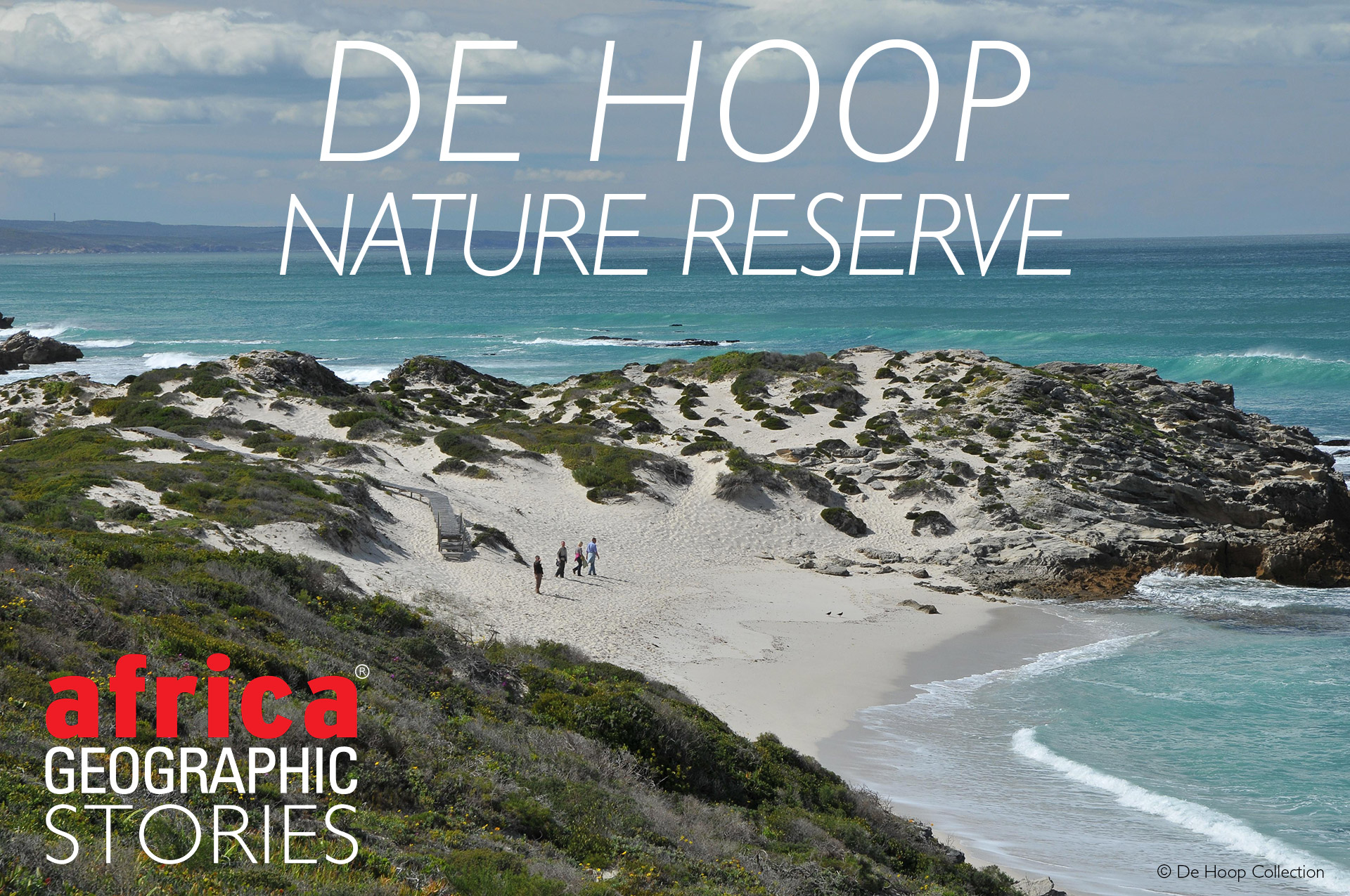
The complete package for outdoor enthusiasts

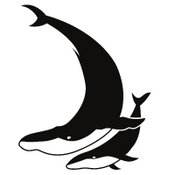
Not too far from Cape Town in the Overberg region of South Africa, near the southernmost tip of Africa, lies a protected haven of sand dunes, long white beaches, beautiful mountains and 70km of spectacular, pristine coastline. Here, a marine reserve stretches 5km into the ocean, where dolphins surface and whales breach and play. De Hoop Nature Reserve is a world apart from the bright city lights.
Inland, away from the coast, this stunning 34,000-hectare reserve is a UNESCO Ramsar World Heritage Site, rich in biodiversity, home to an array of unique and rare wildlife, and a favourite destination for hikers, cyclists, bird watchers, and whale watchers.

Once upon a time
Thousands of years ago, Stone Age people hunted wildlife in what is now De Hoop Nature Reserve, followed by Late Stone Age hunter-gatherers who lived off the land and coastal resources. Before the arrival of Europeans, the nomadic Khoisan or Khoekhoen roamed the inland plains. (Today, carefully preserved artefacts from this era are displayed at the tourist information centre at the main entrance.) On guided walks, one can even visit the middens, where the indigenous inhabitants of the southern coast, known as Strandlopers, combed the beaches and consumed shellfish for hundreds of years. The Overberg region was colonised in the early eighteenth century, and over the next 100 years, it became known for sheep farming, horse and cattle breeding, and grain farming.,
The Cape Provincial Administration bought the De Hoop farm in 1956, and De Hoop Nature Reserve was proclaimed in 1957. The further acquisition of land enlarged this. Initially, the reserve served as a wildlife farm, where rare and endangered species, such as bontebok and Cape mountain zebra, were bred for restocking. Since the early 1970s, though, the objective of De Hoop has been the conservation of this unique coastal region, and in 1986 a Marine Protected Area was proclaimed off its coast, contributing to the conservation of the region’s coastal marine resources.
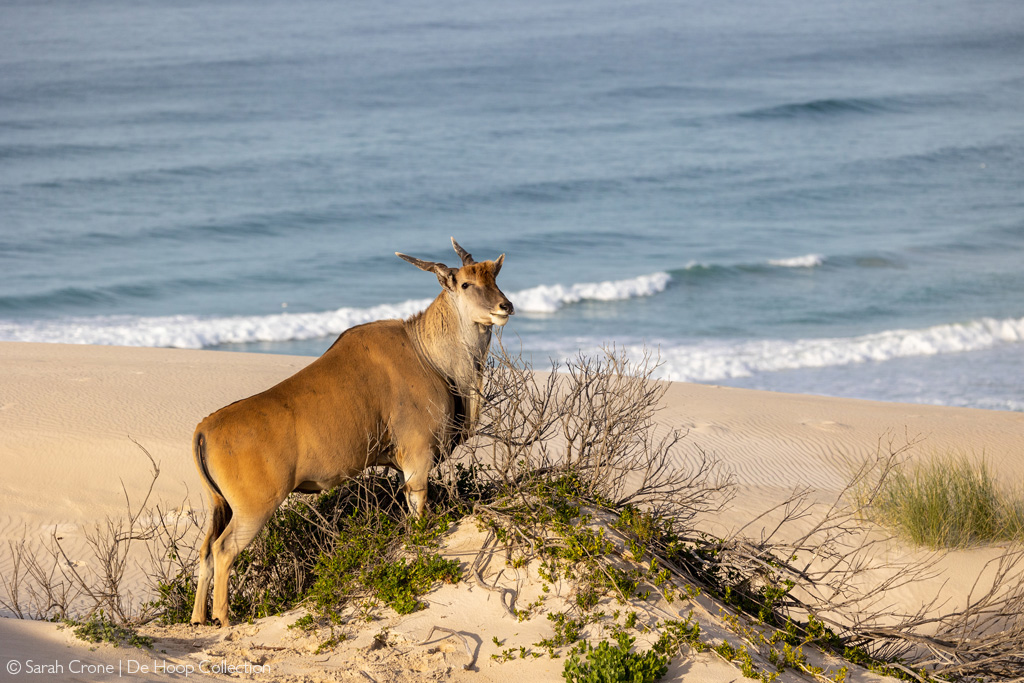

Wildlife and conservation success in De Hoop
De Hoop’s varied habitat supports a diversity of wildlife. The reserve hosts 86 mammal species, including the rare bontebok and Cape mountain zebra, eland, grey rhebok, baboons, yellow mongoose and caracals. Lucky visitors may even spot the occasional Cape leopard. And there are many ways for visitors to De Hoop to get out and enjoy this local wildlife – whether through traditional game drives in a vehicle, guided mountain bike rides or hikes. Cycling past the plentiful herds of eland and bontebok and walking among the zebras is an experience not to be missed.
This experience is all the more precious as De Hoop (along with a neighbouring conservancy) is now home to a slowly growing population of endangered Cape mountain zebra. This achievement is no small feat considering their near extinction at the beginning of the 20th century, after hunting and habitat loss reduced the population to less than 60 individuals. But conservation efforts by local reserves, national parks and landowners helped bolster numbers, and their story is now one of South Africa’s most successful conservation stories. The population established at De Hoop in the 1960s contributed to their survival, and today their numbers in South Africa have grown from under 100 in the 1950s to 1,200 animals by 2000.
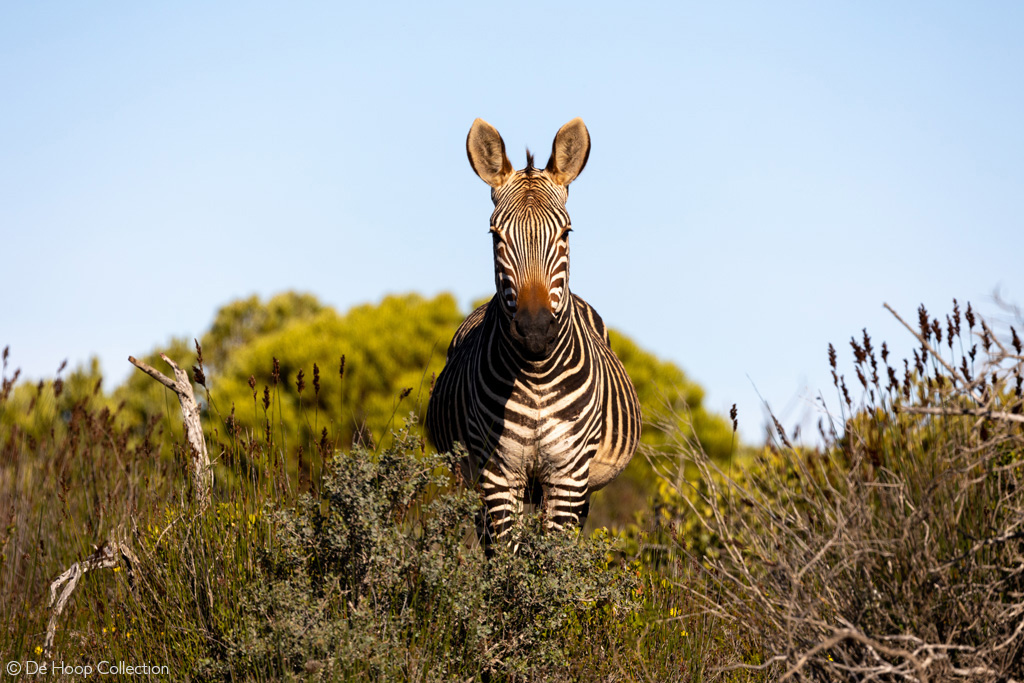
The bontebok in the reserve share a similar history. The bontebok, a sub-species of blesbok, was once so endangered due to excess hunting, agricultural encroachment and competition with domestic stock for forage and water that only 17 individuals remained by the 1800s. Drastic intervention to save them from extinction in 1931 led to the establishment of the nearby Bontebok National Park (near Swellendam). By 1969, the bontebok population number 800 strong, and today the population hovers between 2,500 and 3,000. While not abundant, the bontebok’s future is considered secure (although the bontebok is still listed as vulnerable on the IUCN’s Red List). A current headcount of 308 of these antelope roams De Hoop – more than just a glimmer of hope for a species that was once nearly wiped out.
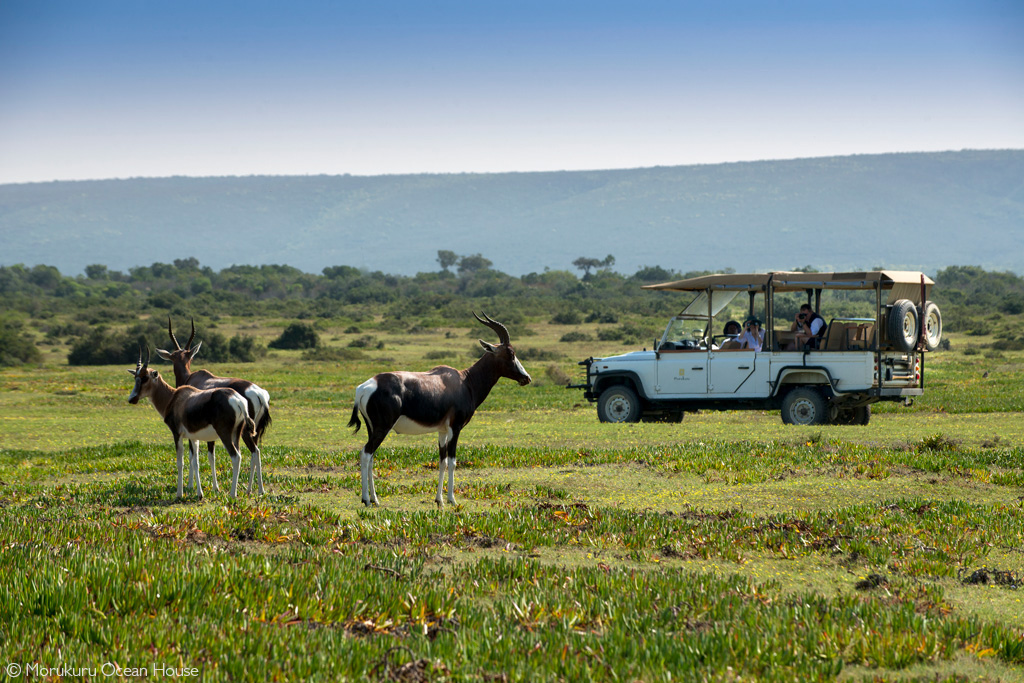
The abundant plant kingdom of De Hoop
De Hoop forms part of the Cape Floral Kingdom – the world’s smallest and most threatened plant kingdom. Fynbos, confined mainly to nutrient-poor soils in the winter rainfall areas of the Western Cape, dominates this kingdom. De Hoop is important for conserving lowland fynbos, as this is the largest area conserving this rare vegetation type. Of all the approximately 1,500 fynbos species found here, 108 are rare or threatened, 34 are endemic and found nowhere else in the world, and incredibly, 14 species are so newly discovered that they have yet to be scientifically examined and described.
Taking a hike on one of the inland trails, visitors find themselves knee-high in fynbos, bathed in fragrance, and surrounded by shades of yellow, coral, pink, purple and green – including heath-like ericas, wiry reed-like restios, and geophytes that store moisture in their fleshy underground bulbs.

Winged wonders of De Hoop
The De Hoop wetlands are internationally recognised as Birdlife International Important Bird and Biodiversity Area, and over 260 species of resident and migratory birds are found here, including flamingos, African black oystercatchers, great white pelicans, migrant wading birds, African fish eagles, endemic southern boubous and colourful malachite sunbirds.
The reserve is also home to a newly established colony of endangered African penguins – another conservation success story. After BirdLife South Africa partnered with CapeNature and SANCCOB to create a new breeding colony for African penguins by constructing a predator-proof fence in 2018 and introducing 148 juvenile penguins to the colony site, more penguins started spontaneously arriving at the site in mid-2022. In late 2022, the first pair of chicks was recorded at the colony – a promising prospect for the future success of the colony.

Not too far from the colony, on the cliffs of Potberg Mountain, avid birders can view the Western Cape’s last remaining breeding colony of Cape vultures. A short but steep hike up De Hoop’s Klipspringer Trail leads to a lookout platform over the colony, home to around 150 Cape vultures. The hike is worth the climb, and the views are spectacular, with vultures soaring overhead, diving and circling in the sky.
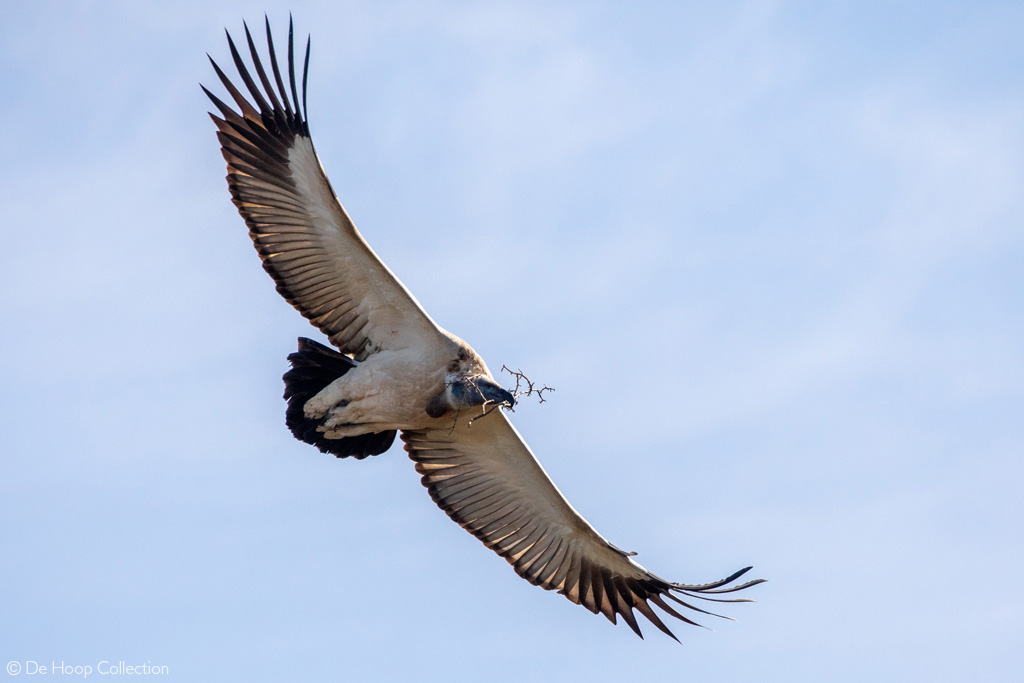

De Hoop’s marine reserve
The De Hoop Marine Protected Area extends 5km out to sea from the coastline of the nature reserve. This is one of Africa’s largest marine protected areas, providing a sanctuary for a fascinating array of marine life. Adventurers can explore the coastal rock pools, fossilised dunes, sandy beaches and rocky shores, where marine life of all shapes and sizes can be seen – from bright orange starfish to purple sea urchins, limpets, barnacles, octopus, and some of the many sea birds that call these shores home. Snorkelling in the large, clear rock pools is one of the best ways to experience this magical marine world.

The protected waters are a haven for endangered southern right whales, and 40% of the world’s population of these gentle giants return from feeding in the far Southern Ocean close to Antarctica in the summer months to the waters off De Hoop annually, to mate, give birth and rear their calves. The marine protected area is an important destination for these magnificent mammals, as it guarantees a safe nursery, and during the season, around 120 whales call De Hoop home.
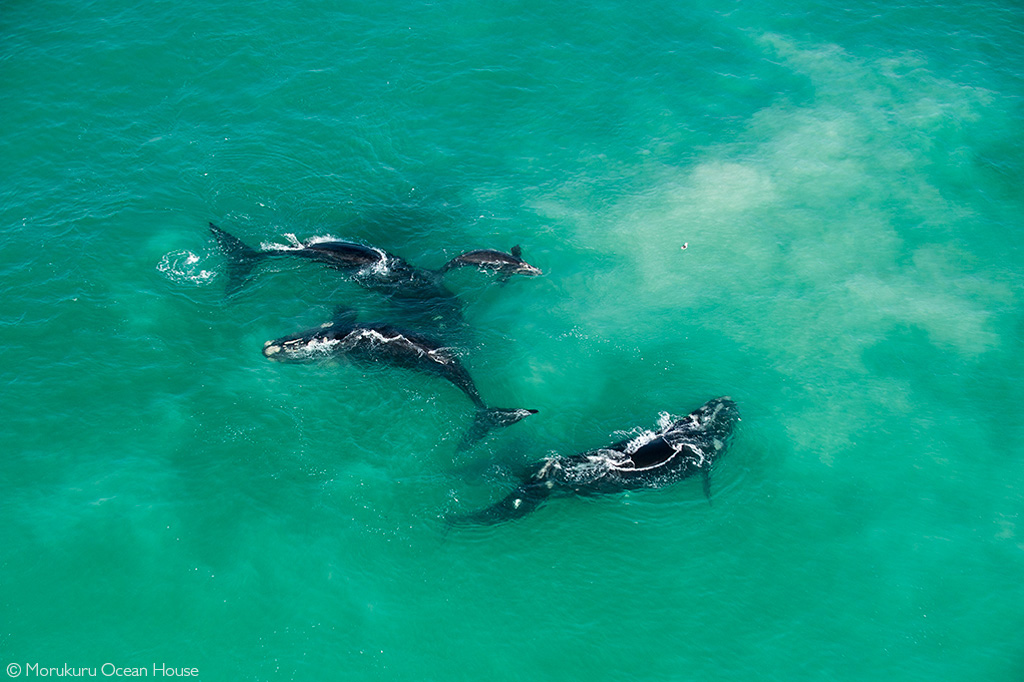
At the peak periods of the season (June and December), as many as fifty can be spotted in a day, making the reserve one of the best spots for land-based whale watching in the world. The whales come so close to shore that visitors can simply sit on the dunes and watch them as they breach, blow and belly-flop. Aside from whales, visitors are likely to spot diving dolphins and frolicking seals, and the waters here are home to at least 250 species of fish.
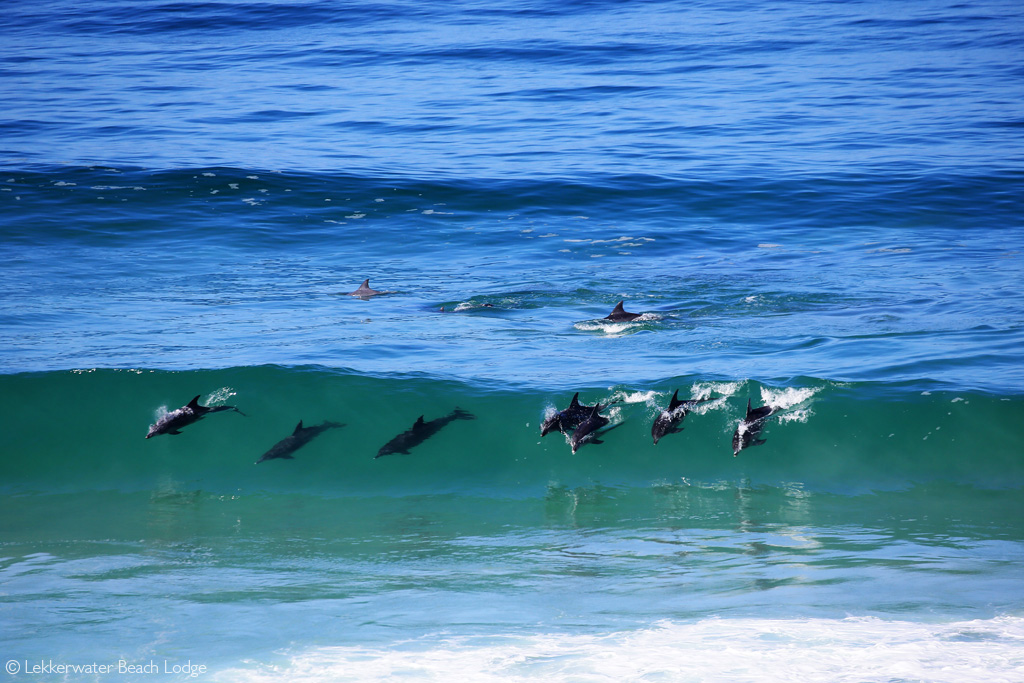

Explore and stay
Want to explore magnificent De Hoop? To find lodges in or near De Hoop, search for our ready-made packages, or get in touch with our travel team, scroll down to after this story.
For the keen hiker, De Hoop has one of the best hiking trails in South Africa: the five-day, 55km Whale Trail, which features well-equipped accommodation along the route. The ‘slack-packing’ route offers coastal and mountain walking, with spectacular views and plenty of opportunities for whale watching. Do note that hiking the Whale Trail requires booking well in advance.
Visiting De Hoop between August and November, during whale watching time, is particularly rewarding, but the reserve has something to offer explorers throughout the year.
Various accommodation options are available, from luxury lodges with panoramic views over the Indian Ocean to self-catering cottages and campsites.

Final thoughts
As the sun goes down on another crisp Cape coast day, and the sky lights up crimson, orange and yellow, there’s nothing better than to sit, gin and tonic in hand, and look out over the endless ocean. Silhouetted against the sky, a southern right whale and her calf make for a sensational sunset spectacle.
De Hoop offers the complete outdoor experience: sea, unspoiled beaches, dunes, wetlands, rare plants, diverse animals, incredible bird life and hiking trails. From adventure, peace and tranquillity to luxury and wilderness, De Hoop has it all.

To comment on this story: Login (or sign up) to our app here - it's a troll-free safe place 🙂.![]()






